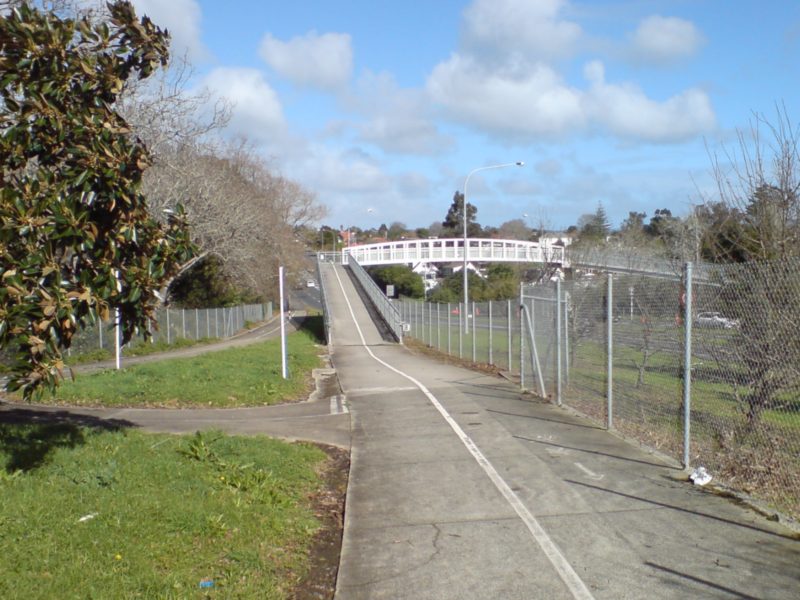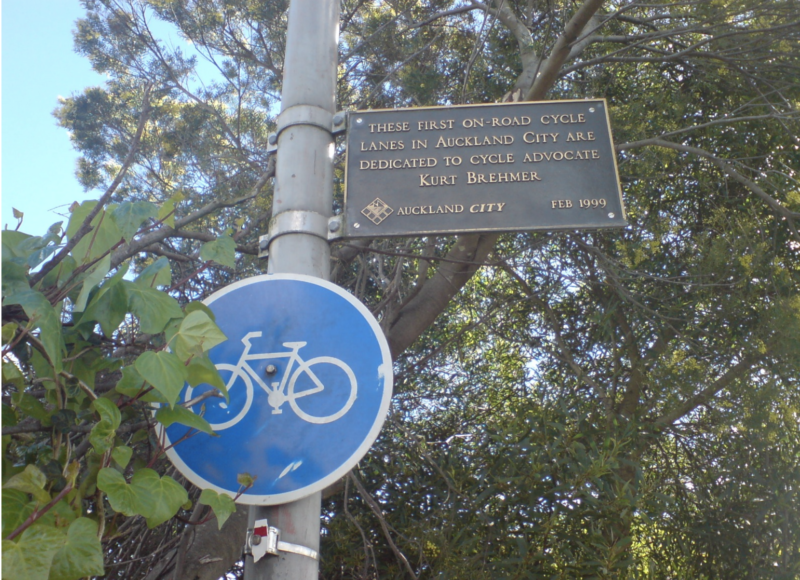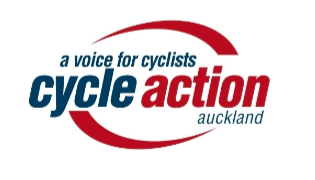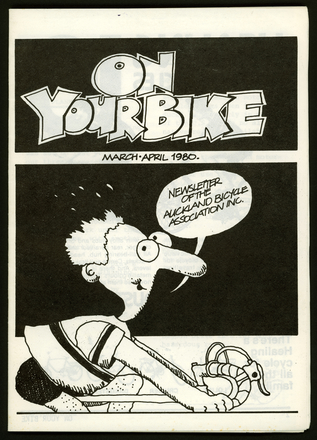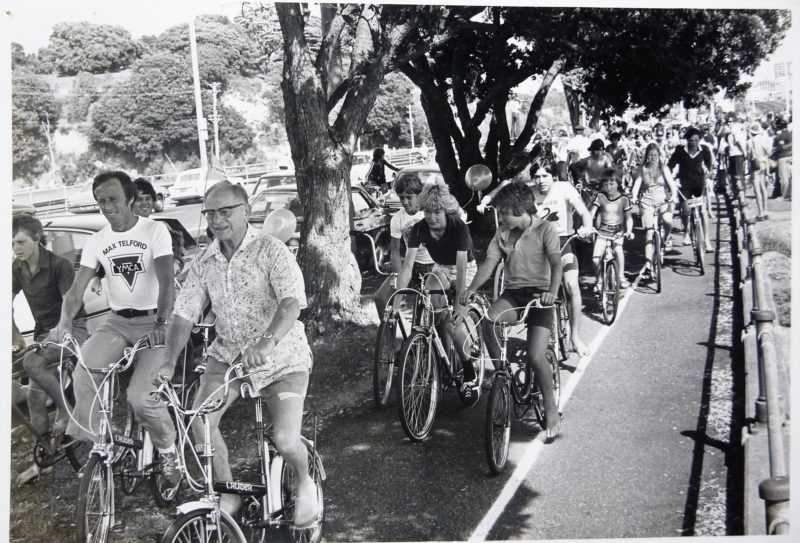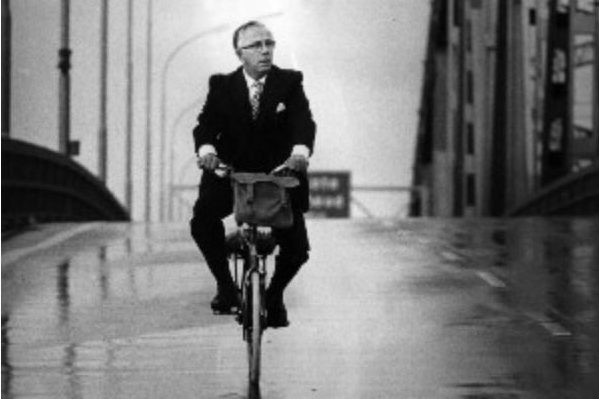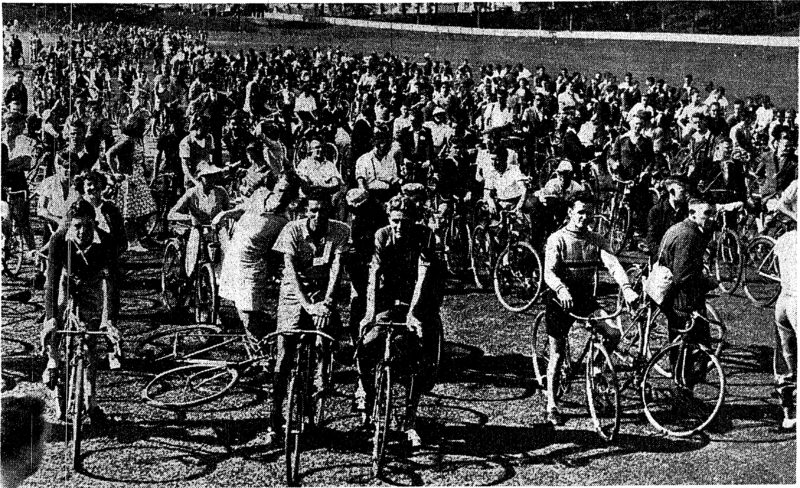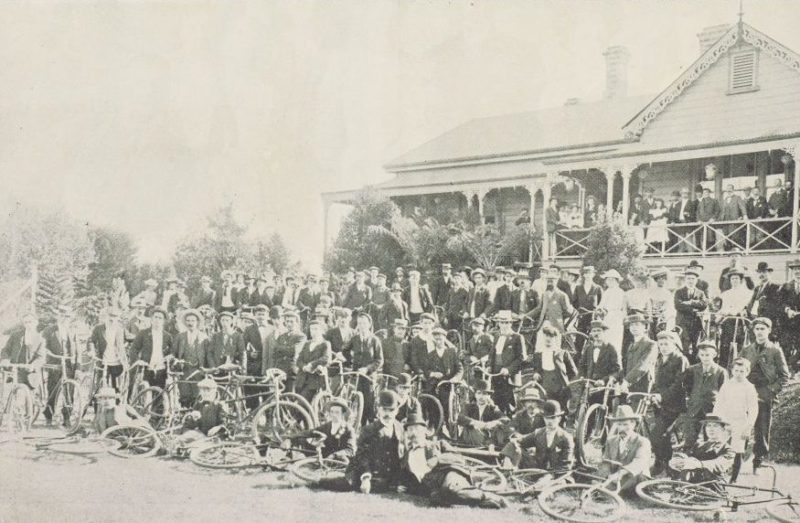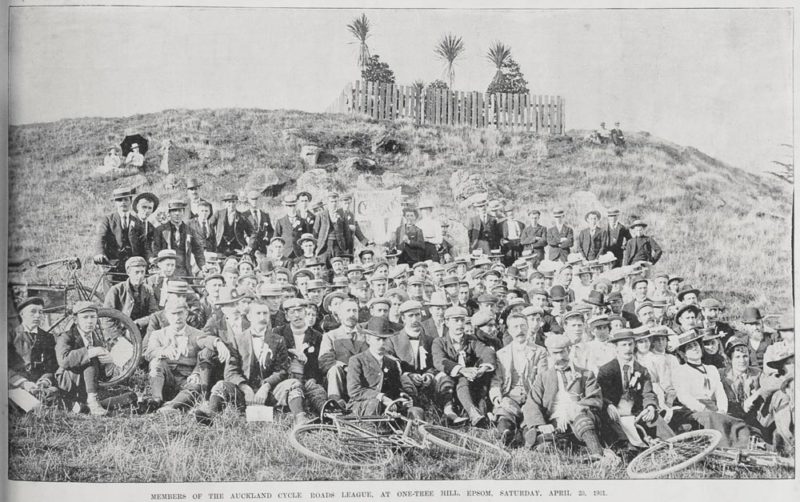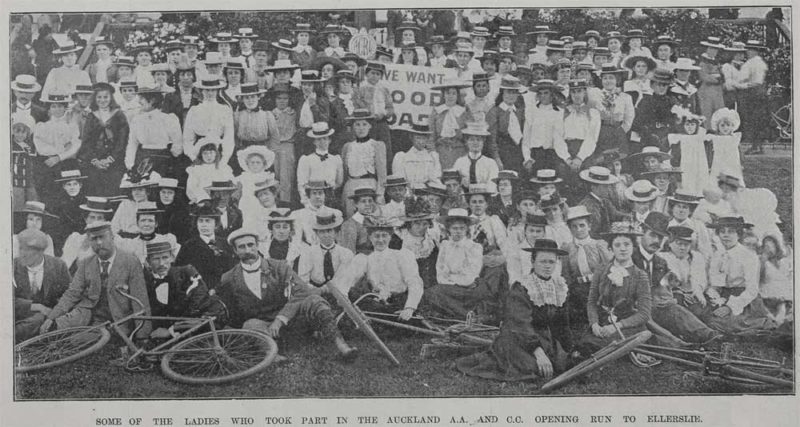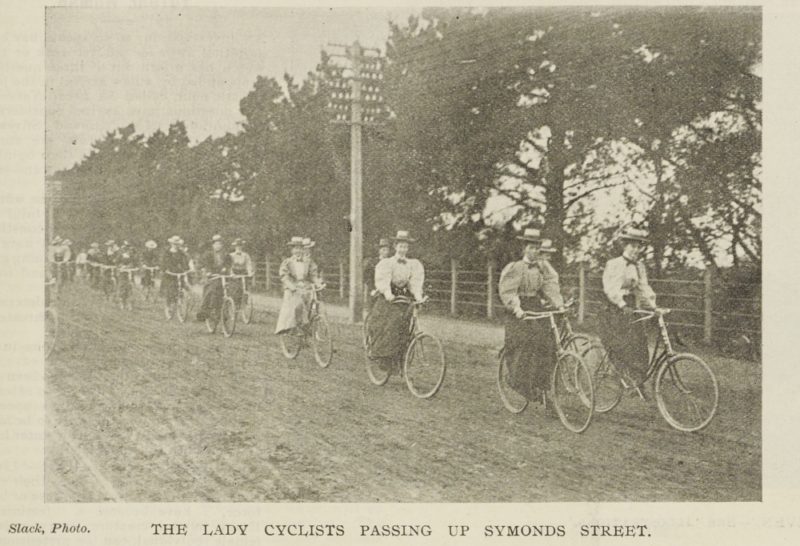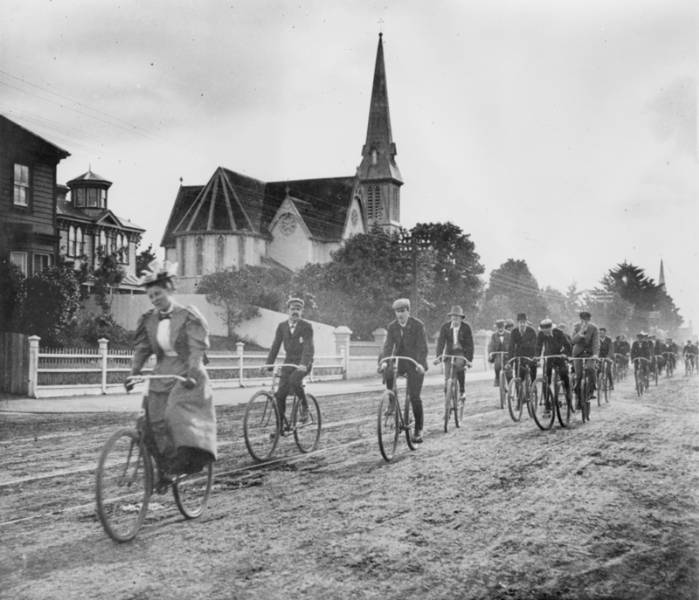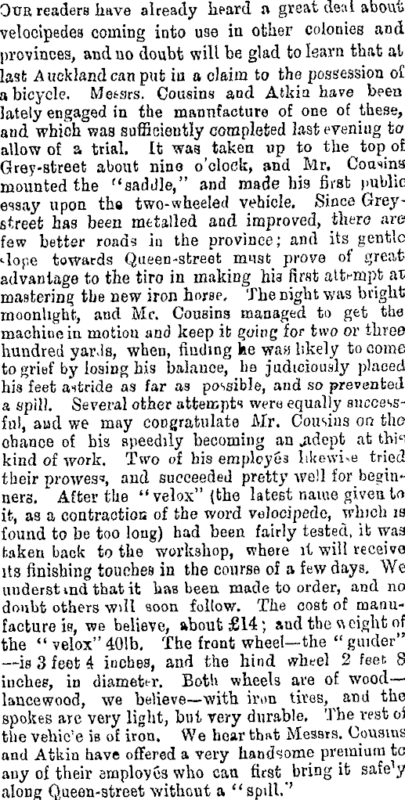For 150 years, Aucklanders on bikes have been bringing our city’s streets to life, and vice versa.
Our vision all along: safe routes and good roads, so we can travel freely under our own power. Here are some highlights of our journey so far – and the healthy, happy future we’re moving towards!

Bike Auckland Timeline
A new bridge over Great North Road at Waterview and a path through the grounds of Unitec replaced a roundabout route on busy roads. At the time, it was seen as the last major link along the Northwestern Cycleway, a route that had been patiently won over many years by advocates including David Knight and Kurt Brehmer.
Astonishing to think that it was only in 1999 that the city’s first painted on-road bike lanes appeared on Carrington Rd, won by Kurt Brehmer and other advocacy pioneers. Even more astonishing: twenty years on, these lanes remain paint-only.
The cycling advocates of Auckland regroup as Cycle Action Auckland, under the guidance of John Gregory and Stephen Knight.
Under the umbrella of Cycle Action New Zealand, advocates led by David J. Knight campaigned for a bike path along the NW motorway. Five years of patient lobbying led to a rule change allowing facilities for pedestrians and cyclists to be built on motorway reserve land. Thus, on 6 December 1992, the causeway from Te Atatū to Point Chevalier became home to the very first off-road separated cycleway on Transit land. This watershed moment paved the way not just for the NW cycleway, but also for networks of walk-bike paths all over the country. Especially since the Waterview Board of Inquiry, motorway expansion and widening projects now generally come with walking and biking access included.
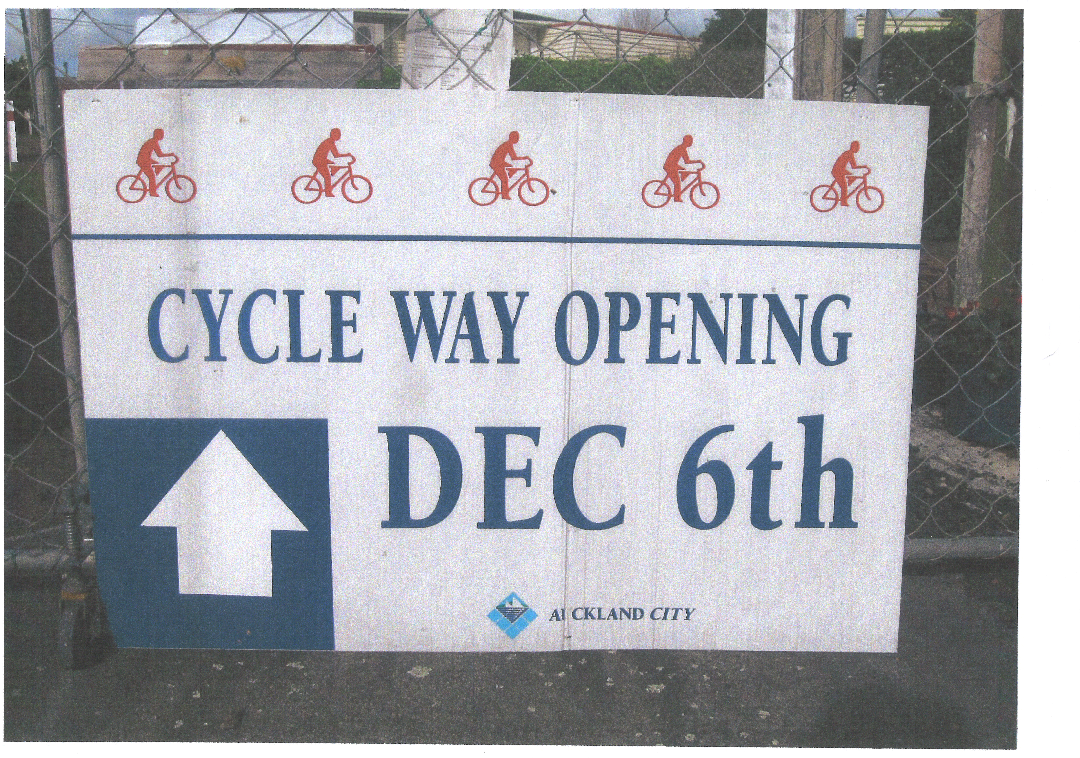
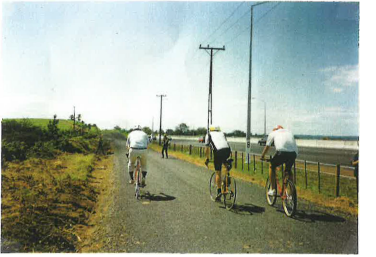
From the early 1980s to the early 1990s, the Auckland Bicycle Association carried the torch of bike advocacy forward, leading the charge for better infrastructure in an era in which ‘vehicular cycling’ – riding amongst traffic – was the prevailing design philosophy. The ABA petitioned for what would become the NW cycleway and the harbour bridge crossing, and published a regular magazine, On Your Bike.
In the 1970s, against a backdrop of petrol shortages and a move towards sustainability, Friends of the Earth set up PATH (Pathways Across The Harbour) to campaign for bike access to the Auckland Harbour Bridge. They drew support from people all over the city, especially residents of Northcote and nearby suburbs who wanted to bike to work in the city.
On 26 March 1976, Mayor “Robbie” Dove-Myer Robinson led a thousand Aucklanders in officially opening the bikeway on Tāmaki Drive. A simple painted line on the footpath from the Ferry Building to St Heliers, it was intended by pioneer planners John Lewis and Graham Dickson as just the beginning of a citywide network – including the dream of a bikeway over the harbour bridge. (Image: David Lewis)





In 1974, during a bus strike, two lanes of the Auckland Harbour Bridge were closed to traffic to allow people to walk and bike. Trevor Lanigan borrowed his daughter Monica’s Raleigh 20 and pedalled from Birkenhead to his job at the Central Post Office. (Image: NZ Herald)
From the late 1930s on, cyclists by the hundreds took part in “mystery bike hikes”, riding en masse to a destination only revealed on the day. In this photo from March 1940, over 800 teenagers gather at the Auckland Domain to ride twelve miles to Tui Glen in honour of the centenary of pedal-power. (Image: Papers Past)
In 1935, concrete bike lanes 8 ft wide were installed along 1km of Great South Rd from Penrose to Ōtāhuhu, to provide a safe route for workers and school children. Led by the Ōtāhuhu Borough Council, the project was supported by the Automobile Association. Two years later, similar lanes were proposed for Great North Rd in New Lynn. Little trace remains of either facility.
In 1903, the Birkdale Cycle League built three miles of bicycle track from Highbury Corner to Birkdale. “The first road cycle track made in the colony” was funded by donations, including a barrel of tar and a quantity of sawdust. The path was opened with a grand celebration hosted by the Mayor of Birkenhead; after a picnic and speeches, 300 riders set off on a ride along the new route. The new track quickly lifted property values in the district. (Image: Auckland Libraries Heritage Collection)


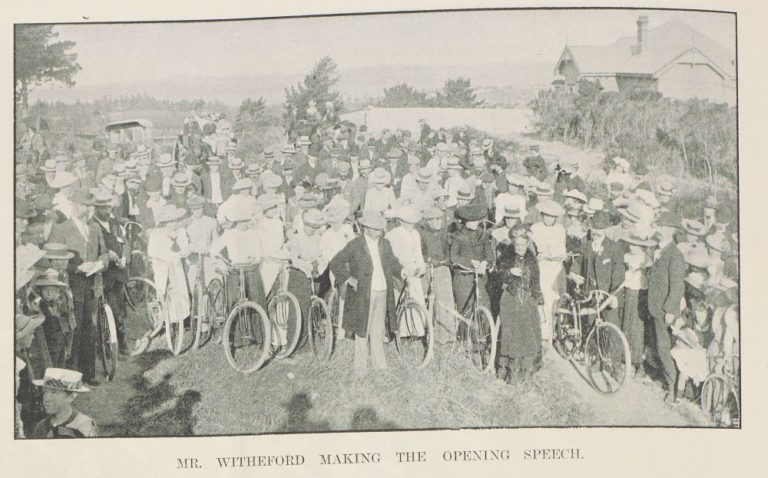
The “Biclorama” run by cycle importers Dexter & Crozier on Victoria St East, shown here in 1902, was just one of many bicycle shops that sprang up around the city to supply suitable wheels for Aucklanders. Hills were clearly no obstacle to our ancestors! (Image: National Library of New Zealand)
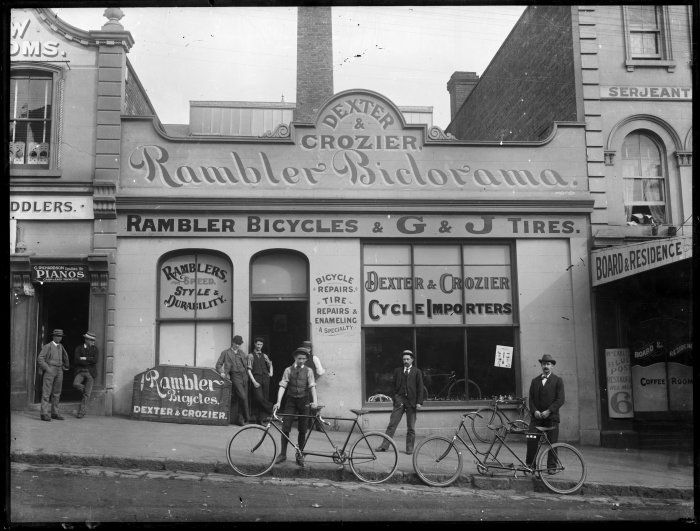
The Auckland Cycle Roads League gathered over 2000 signatures towards a 10,000-strong nationwide petition from cyclists, asking Parliament for a dedicated tax to fund better roads. “We want cycle tracks” says the banner at a picnic on One Tree Hill on 20 April 1901. (Image: Auckland Libraries Heritage Collection)
Bicycle clubs like the Auckland Amateur Athletics and Cycle Club hosted group rides that drew hundreds of participants. They also campaigned vigorously for sealed roads and improved streets: ‘WE WANT GOOD ROADS’ says the banner at this November 1900 gathering.
(Image: Auckland Libraries Heritage Collections.)
Women especially embraced cycling as a means of liberty, independence and social enjoyment, and the bicycle was instrumental in the campaign for women’s suffrage. Shown: the Auckland Ladies’ Cycling Club proceeding up Symonds St in 1897 on one of their regular runs.
Aucklanders were quick to cotton on to the fun and accessibility of two-wheelers, with many a social club dedicated to promoting and enjoying the new activity. Pictured: The Holy Sepulchre Bicycle Club heading down Khyber Pass, in 1896.
(Image: Auckland Museum Collection)
On a moonlit Monday night, 23 August 1869, the wagon-maker Mr Cousins rode a “velocipede” down Grey St (present-day Greys Ave) towards Queen St. His feat was reported in the papers the following day, setting in motion a contagious social revolution that’s still rolling a century and a half later.

